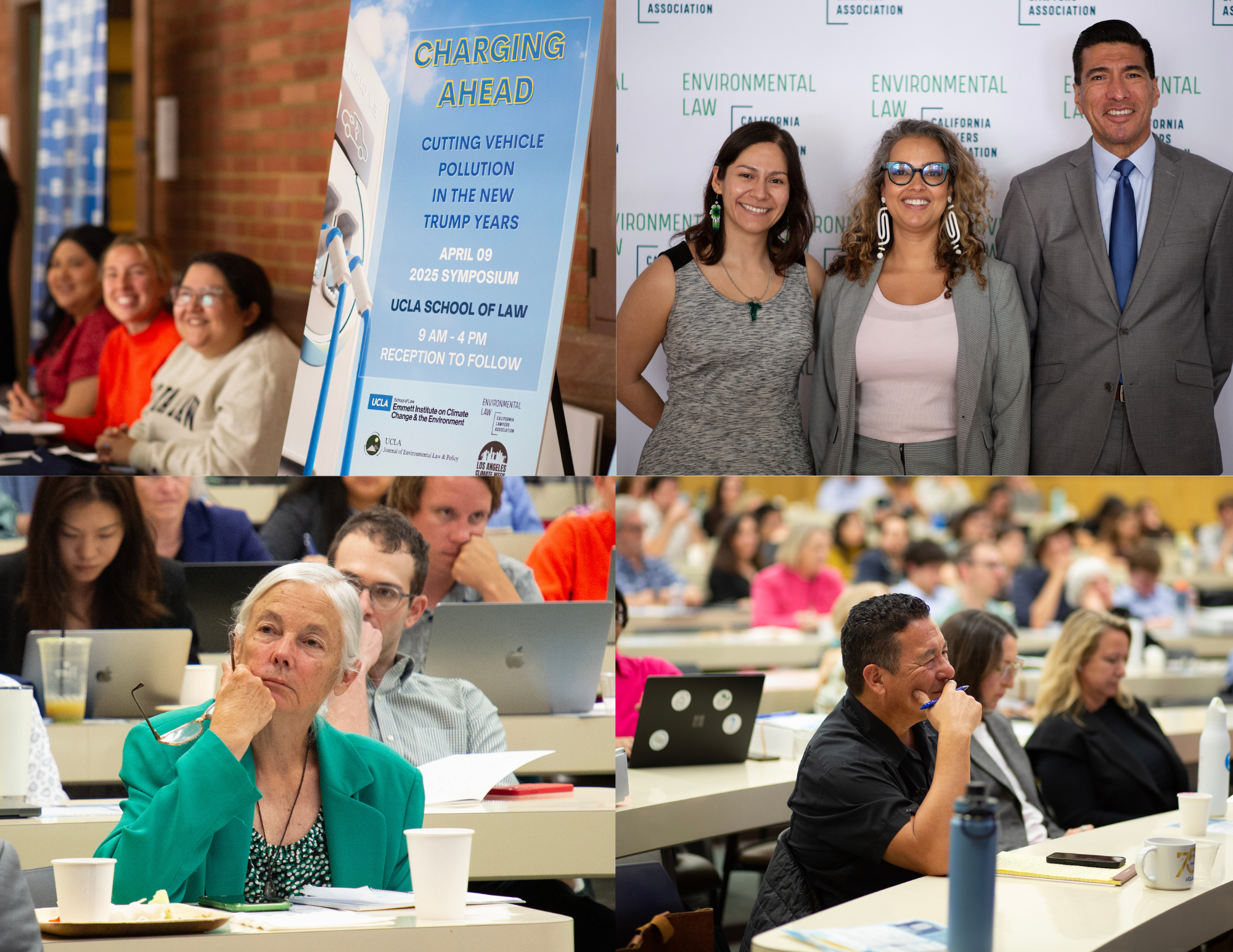Region: National
State Climate Programs Under Trump – Little Drama, Steady Progress
Ignoring Trump, state have continued work on achieving their climate targets.
Despite all the drama in D.C., state governments have continued to make quiet progress in their efforts to expand clean energy and phase out fossil fuels. These states are focused on tangible steps forward, not on capturing online clicks, so their efforts may escape notice. But the cumulative effect of these month-by-month, smaller-scale initiatives is significant.
CONTINUE READINGWhat’s the Harm?
Tentative thoughts on Trump Administration’s proposed repeal of the ESA regulation defining harm
The administration has proposed revoking the definition of harm in the regulations implementing Section 9 of the Endangered Species Act (ESA). Section 9 is the section of the ESA that prohibits taking a member of a listed species. The change is significant because that definition of harm included, in some circumstances, actions that modify the …
Continue reading “What’s the Harm?”
CONTINUE READINGDay After Earth Day, the Climate Pope, and the 89%
The Drain is a new weekly roundup of climate and environmental news from Legal Planet.
Environmental journalists everywhere are breathing easier this morning. They made it through Earth Day — one of two insufferable seasons of cliche, inane PR pitches clogging their inboxes. (The other? The 2-week UN Climate Conference each fall.) Environmental advocates are breathing a little easier too, because the White House blinked first in the war of …
Continue reading “Day After Earth Day, the Climate Pope, and the 89%”
CONTINUE READINGWhat Should You Do For Earth Day? Get On The Phones
The Environmental Voter Project is pushing hard in Michigan and Texas.
Politics matters. A lot. This assertion might strike as the epitome of obviousness, but when it comes to Earth Day, there is a tendency to get away from the hard work of blocking and tackling and more toward thinking about Our Relationship With The Earth on a conceptual level. At this point, I’m sick of …
Continue reading “What Should You Do For Earth Day? Get On The Phones”
CONTINUE READING“What We Do Matters:” UCLA’s Charging Ahead Symposium
States and cities have a lot of tools to cut vehicle pollution. It’s time to break them out.
Trump is a bump. A nasty one, but a bump nonetheless, because the world is on the road to zero-emission fuels and vehicles no matter what. That was one takeaway from “Charging Ahead,” the UCLA Emmett Institute’s annual symposium held on April 9 — devoted this year to cutting vehicle pollution during the next four …
Continue reading ““What We Do Matters:” UCLA’s Charging Ahead Symposium”
CONTINUE READINGPrecedent, the Trump Administration, and Endangered Species
A new Trump Administration initiative misinterprets the overruling of Chevron
The Trump Administration’s effort to strip away protections under the Endangered Species Act that had previously been upheld by the Supreme Court. The Administration seems to think they’re entitled to ignore that earlier decision because it was decided under the Chevron test and Chevron has since been overruled. They’re wrong. If it wishes to change the existing interpretation, the agency must give a reasoned argument for doing so that discusses the relevant policy issues, including reliance and the impact of its decision on endangered species.
CONTINUE READINGThe NIMBY Presidency
Peter Navarro hates foreign trade. He also hates housing.
Well what a surprise. Not: Before Peter Navarro designed trade wars for President Trump, he orchestrated housing wars in San Diego across five unsuccessful bids for local office. Navarro, then a UC Irvine economics professor, led San Diego’s slow-growth movement in the 1990s, drawing battle lines that still define today’s development fights. His zero-sum view on homebuilding then …
Continue reading “The NIMBY Presidency”
CONTINUE READINGLocal EV Leadership During Federal Withdrawal
The clean mobility transition is in local hands.
The federal landscape for electric vehicle (EV) investment is laden with pause and uncertainty. High-profile program discontinuations–both planned and executed–threaten to disrupt EV deployment efforts, while unpredictable tariffs interfere with drivers’ ability to afford vehicles. As local leaders work to reconcile ambitious transport decarbonization goals with the current lapse in federal climate leadership, public planners, …
Continue reading “Local EV Leadership During Federal Withdrawal”
CONTINUE READINGIs Trump Good for the Oil Industry?
Not particularly, it would appear. If there’s an effect, it’s not big enough to hit the eyes.
No doubt, the industry would rather have Trump in office than Harris. But the effect on industry profits may only be incremental. It would be great to see a rigorous statistical analysis by a finance expert, but a bump to oil profits isn’t obvious in share prices.
CONTINUE READINGChevron’s Losing Play to Avoid Big Damages
Chevron sponsored Super Bowl LIX events and science classes for New Orleans children just weeks before a Louisiana jury ordered it to pay $745 million in damages.
In February and March, Chevron generated headlines for its charity at the Super Bowl in Louisiana. This month, the oil company made very different headlines for being ordered to pay $745 million for damage to the Louisiana coast after a jury verdict. One of these stories shows the company as a town hero in a …
Continue reading “Chevron’s Losing Play to Avoid Big Damages”
CONTINUE READING











